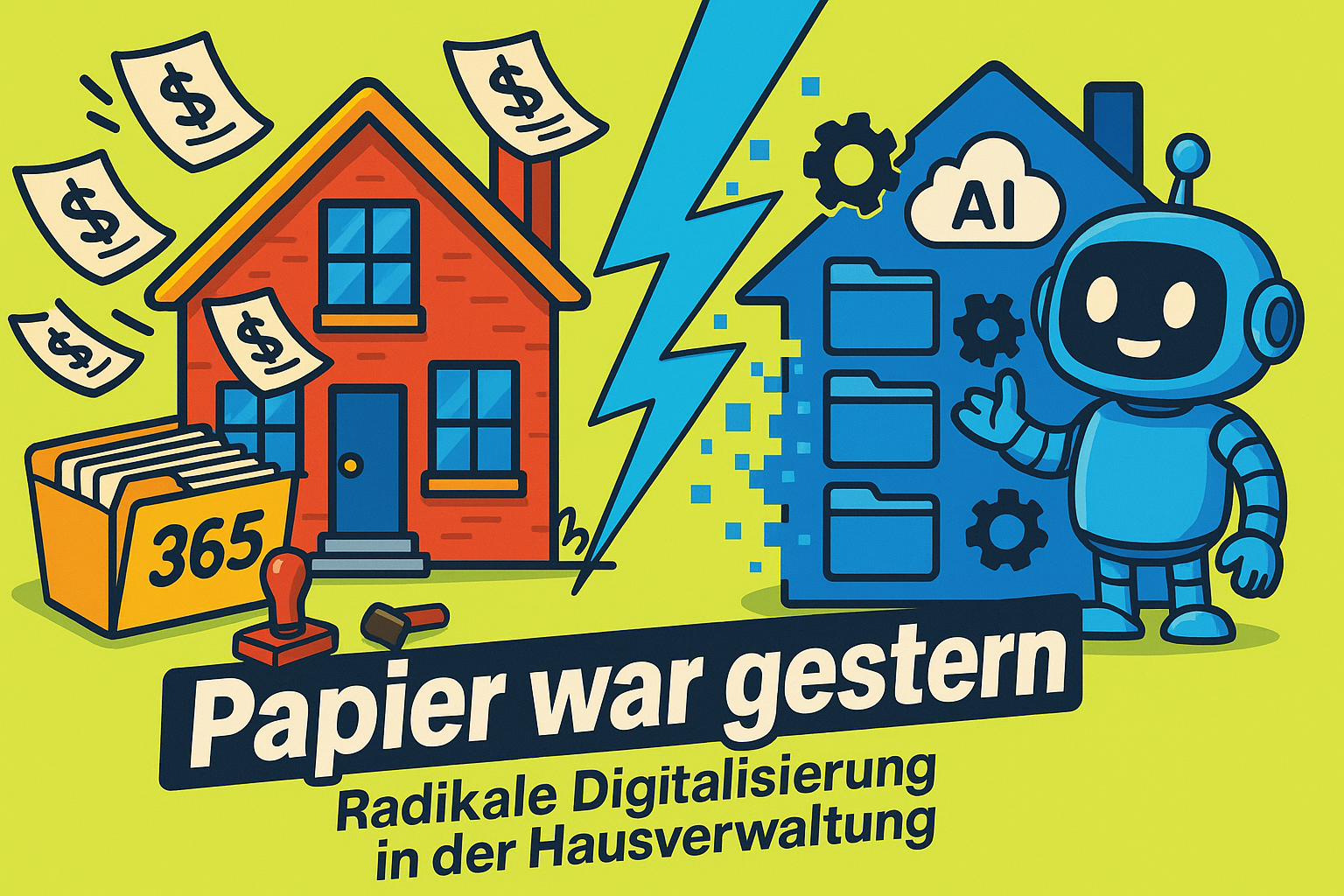A look ahead to the future development of AI and automation.

While other industries have long since embraced AI, many property management companies still work with Excel and paper files. But some pioneers are showing how radical digitalisation really works. Modern property management companies are struggling with a shortage of skilled workers, increasing compliance requirements and a growing number of properties. Proven paper-based processes work, but not in the long term. When experienced employees retire, their knowledge disappears.
The most common mistake in digitisation: mapping old processes 1:1 digitally. The radical approach is better – building a completely new IT infrastructure with cloud tools. Throw everything else away. This radical approach comes at a price – massive change for all employees. But experience shows: "If you want to do it quickly, you have to be able to take criticism." When selecting software, API interfaces are essential for AI integration. The software should be cloud-based, scalable and user-friendly. The problem with many established providers: closed systems without interfaces. The prognosis is clear: "Software without interfaces will disappear from the market."
LLMs outperform traditional OCR tools in invoice processing because they understand invoices in context. But AI first has to learn that "Ärztehaus am Sendlinger Tor" belongs to "Sendlinger Tor 15". Without access to company data – objects, contacts, contracts – any AI is useless. Azure AI Search with semantic search enables automatic object mapping. Nevertheless, mistakes happen: service providers write the wrong year, forget the unit number or specify the wrong object. That's why "agents" are needed – programmes that recognise such errors and automatically ask for clarification.
Automation reduces manual data entry by up to 80%. Fewer errors, faster processing, more efficient processes. The investment costs for cloud infrastructure, software licences and change management are amortised through scalability without proportional staff increases. The vision for the next two years: "Employees only process exceptions. Everything else is automated." Invoice verification, utility billing and standard enquiries are to run fully automatically. The motivation behind this: "Working time is lifetime. Why should we waste it on repetitive tasks?" Practical implementation takes about seven months: first analyse processes and select software, then set up infrastructure, then migrate data and train employees, and finally go into full operation with AI tools.
The digitisation of property management is a strategic decision, not a technical gimmick. The keys to success are a radical reboot instead of gradual evolution, providing AI with sufficient context, choosing open systems with API interfaces, and freeing people from routine work. The property management industry is facing enormous upheaval. Not only because the old guard is retiring, but also because demands are increasing. The future is digital. Those who fail to act now will be left behind.
Would you like to digitise your property management? These insights come from a podcast episode with Marco Gronover, who has already successfully navigated this path.
We're eager to connect with you and explore how we can help your business thrive in the digital age. Whether you have questions about our digital transformation services, need assistance with a software project, or simply want to learn more about Nextaim, our team is always ready to assist. Simply provide your details in the contact form on the side and we'll get back to you promptly.